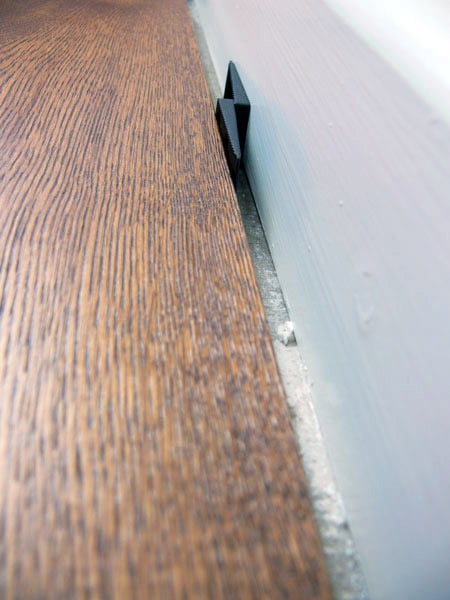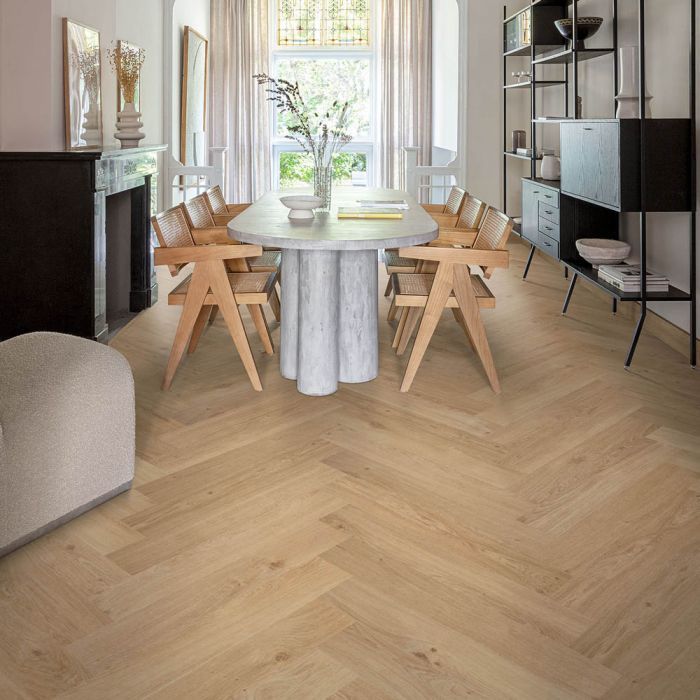An expansion gap is a term used when fitting wooden flooring. It is an essential gap that must be left around the edge of the room when fitting hardwood, bamboo or laminate flooring. The expansion gap should be around the whole perimeter of the room, wherever the flooring may be against fixed objects, such as walls, doorways, radiator pipes and fireplaces.

Why do I need an expansion gap?
As wood is a natural product, hardwood floors will absorb any moisture in the air caused by humidity, and as a consequence the planks of flooring will expand. Then, as the levels of humidity in the room are reduced, the planks of flooring will contract again. Therefore, an expansion gap around the edge of a room will allow for natural expansion and contraction into the gap without causing any damage or distortion to your hardwood flooring itself. If no expansion gap has been left, when a floor naturally expands it will have no where to go and will raise up and damage the flooring. Although engineered hardwood floors can withstand changes in temperature and moisture better than solid wood floors, they still need an expansion gap to allow for small movements.
What size expansion gap do I need?
For standard sized rooms or areas an expansion gap of between 12mm – 15mm should be left around the perimeter of the room, including doorways. To ensure the correct sized expansion gap is left, flooring spacers can be used during installation. These are then removed once the installation process is complete.


In addition to an expansion gap around the perimeter of the room, larger rooms with a linear width of 10 meters or more, should have small gaps (sometimes referred to as credit card slots) left in between flooring planks throughout the room. On average these small gaps should be left between every fifth plank of hardwood flooring. However, this can only be done if the flooring is being glued, screwed or nailed directly to the subfloor. This is necessary for larger rooms to allow for an even expansion across the whole space because the hardwood flooring expands more in width than length.
How can I cover up an expansion gap?
There is no need to worry about the look of an expansion gap as it can be covered up by hardwood flooring mouldings and accessories, such as: skirting boards, beading, T-mouldings and pipe covers. There are a wide range of mouldings and accessories available to match or complement your choice of hardwood flooring.






